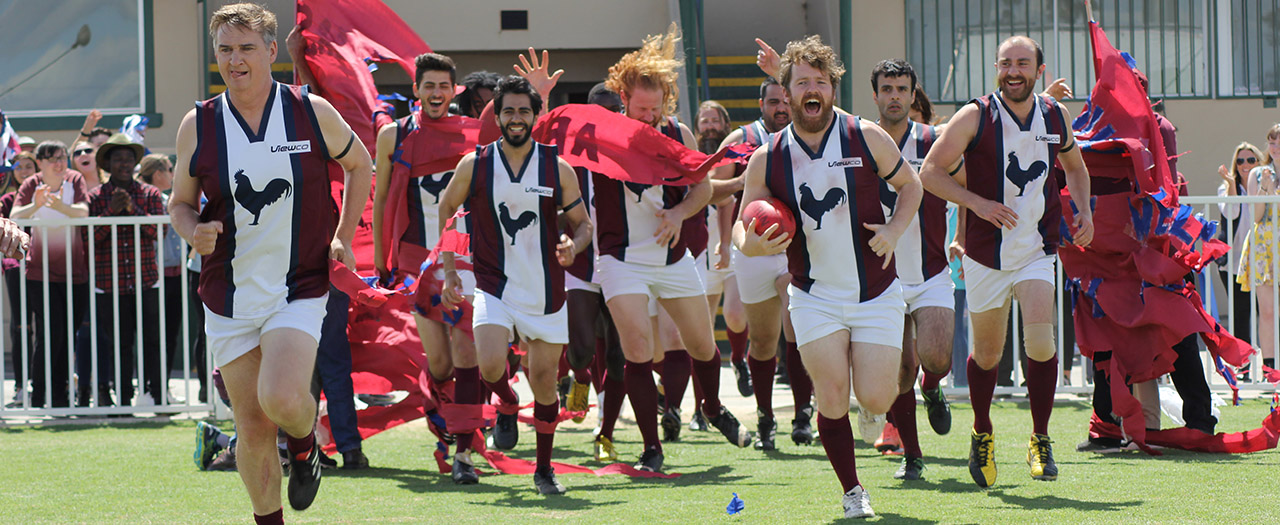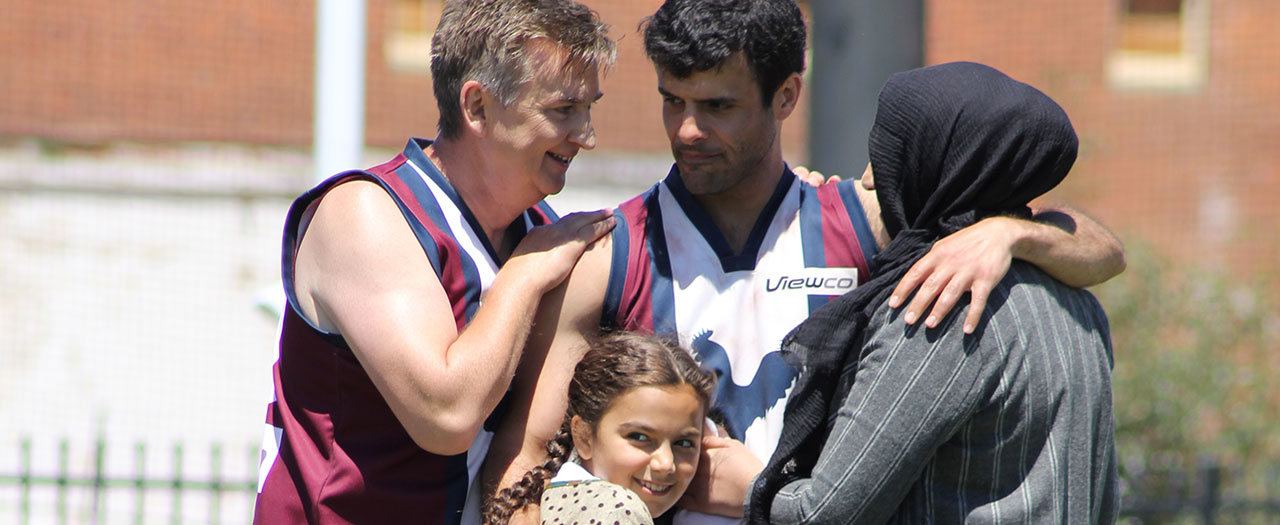Beyond the Boundary: An Interview with The Merger director Mark Grentell

By Claire White
Filmmaker Mark Grentell grew up in the small community of Uranquity, just 15 kilometres outside of Wagga Wagga in New South Wales. Film was a window on the world to him: he’d go to the local fish-and-chip shop-cum-video store and borrow seven VHS movies for $10 every week, working along the shelves from left to right.
Grentell focuses on the world he knows best, regional Australia, in his latest feature, The Merger, which premiered at MIFF’s Centrepiece Gala. Based on a one-man show by Damian Callinan (who also wrote the screenplay and stars in the film), The Merger is a hilarious and heartwarming film about a former AFL star and town outcast, Tony Carrington, who enlists a group of refugees to help save the local football club – and tackle racism in a rural community.
MIFF Critics Campus participant Claire White talked to Grentell about The Merger, and the importance of accurately representing stories on screen.
You grew up in a small town. How important is your community in relation to your art?
It’s massively important. The art you create is based on the experiences you have in life. So, when I had to make a film in a regional area, and I was trying to find iconic locations and imposing symbolism. We always present regional Australia as Red Dog, dusty red dirt, like it’s outback. That’s a tiny percent of real, rural and regional Australia. I wanted to show big landscapes, an epic scale, to really capture the cinematic [nature] of it, and show the scale of the land these people occupy.

Did you do much work with your cinematographer Tony Luu in capturing that regional New South Wales landscape?
Yeah, copious amounts of work. We knew we didn’t have a lot of time, so preparation was key. The canola scenes, the rolling hills, the big football fields. Even the decision to shoot widescreen, you know, just to give it that cinematic effect. Tony’s great, he’s got such a beautiful eye. And [he] was desperate to tell the story. Tony is a refugee from Vietnam, and he was literally born on a boat halfway between Australia and Vietnam.
He’s been dying for a way to sort of tell the refugee story as a filmmaker himself. So, when he read the script, he was straight on board, and he was a huge part of why the film is successful.
Did you collaborate with your cast to work out how these refugee characters should be portrayed?
Absolutely. The characters are written one way, and then through casting we had to change some of the back stories of the characters to suit the actor and make sure it matched their ethnicity. Francis Kamara, who played Didier, is a great example. His character was [written as] Iraqi, but when we saw [him] we thought, ”Oh wow, he’s a beautiful, great actor, lives in Wagga, great kid, [would] love to give him a chance to do the film,’ but he’s from Sierra Leone. People are fleeing Burundi [a neighbouring country to Sierra Leone] like crazy, so we spoke to him and his family, asked if he would be interested in playing a Burundi character and he said, “Yeah, my family is from there, I’ve got a connection to the place.” Then he helped us recraft the history and the dialogue for the character.

It seems the culture around you and your actors, and that collaborative process, made sure you took the time to tell these stories accurately and inclusively.
Yeah, well, let them tell the story. Especially when you’re making a film about other people’s cultures, that I had a respect or understanding of, if you block that out then you’re doing a disservice to the film, you’re doing a disservice to them.
You’re having a premiere in Wagga coming up soon, what’s the reaction to that been like?
Yeah, they are ridiculously excited. I think the word of mouth from MIFF on the weekend just spread very quickly and people are super excited to see it. I’ve seen Wagga change in the last five years. There’s been an intake of 5000 to 6000 refugees in the Wagga Wagga area in the last five years. So, you’ve seen those communities and those cultures combine and join schools, join sporting clubs, take jobs in the community. You’ve seen the attitudes change as the integration and the assimilation on both sides takes place. So I feel like this is a film of today, of now, and there will always be pockets of resistance but I think the overwhelming thing is that people embrace that change and they see the positivity and the hope of the film.